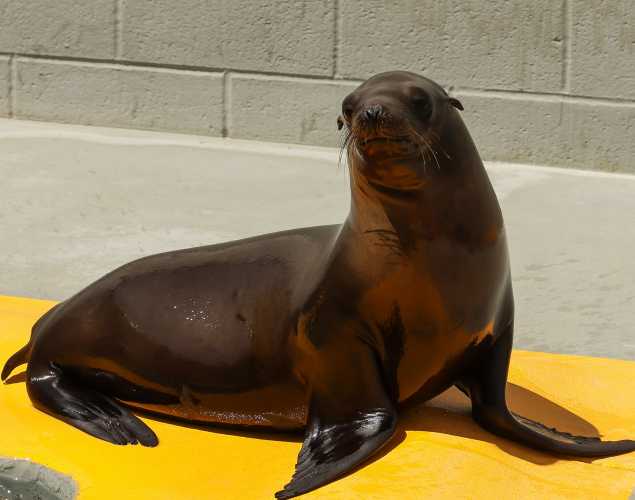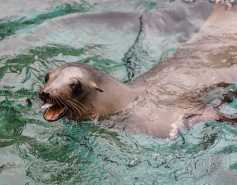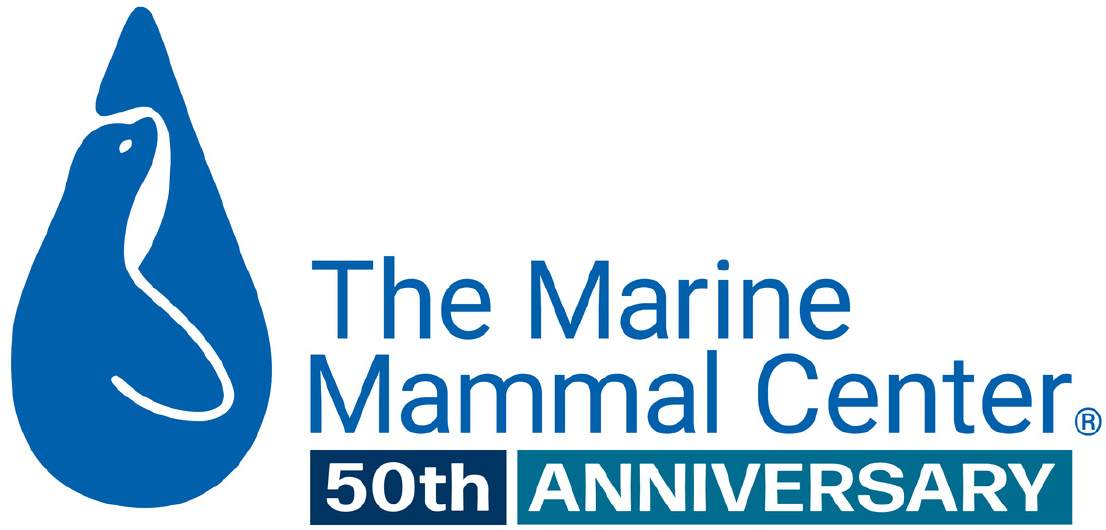
Ecotoxicoparasitology of the Gastrointestinal Tracts of Pinnipeds: the Effect of Parasites on Total Mercury
- Parasites
Abstract
Acanthocephalans, cestodes, and some species of nematodes acquire nutrients from the lumen contents in the gastrointestinal (GI) tract of their definitive host. These parasites are exposed to toxicants, such as mercury (Hg), through passive or active feeding mechanisms; therefore, the focus of this study was to determine if there is an effect of parasites on the dietary availability of total mercury (THg) within piscivorous pinniped hosts. THg concentrations ([THg]) in selected host tissues, parasites, and GI lumen contents from 22 California sea lions (Zalophus californianus), 15 ringed seals (Phoca hispida), and 4 spotted seals (Phoca largha) were determined. Among all pinnipeds, [THg] in acanthocephalans of the large intestine were significantly higher than concentrations in other samples (host lumen contents, other parasites and host intestinal wall), irrespective of location within the host GI tract. δ15N values of parasites depended both on parasite group and location within the GI tract. δ15N values were consistently higher in parasites inhabiting the large intestine, compared to elsewhere in the GI tract, for both sea lions and seals. δ13C values in parasites did not differ significantly from host GI tissues. Based on both [THg] and stable isotope values, parasites are likely affecting the Hg bioavailability within the GI lumen contents and host tissues, and toxicant-parasite interactions appear to depend on both parasitic taxon as well as their location within the host intestine.
McGrew, A.K., O’Hara, T.M., Stricker, C.A., Salman, M.D., Van Bonn, W., Gulland, F.M.D., Whiting, A., Ballweber, L.R. 2018. Ecotoxicoparisitology of the gastrointestinal tracts of pinnipeds: the effect of parasites on the potential bioavailability of total mercury (THg). Science of the Total Environment. 631-632(2018): 233-238.
Related Publications
{"image":"\/Animals\/Patients\/California sea lions\/csl-by-bill-hunnewell-c-the-marine-mammal-center-1.jpg","alt":"California sea lion eating a fish","title":"New Technique for Diagnosing Lung Parasite Infections in Sea Lions","link_url":"https:\/\/www.marinemammalcenter.org\/publications\/new-technique-for-diagnosing-lung-parasite-infections-in-sea-lions","label":"Research Paper"}

{"image":"\/Animals\/Wild\/Sea otter\/sea-otter-shutterstock.jpg","alt":"sea otter eating shellfish","title":"Parasite-Associated Hepatitis in Southern Sea Otters","link_url":"https:\/\/www.marinemammalcenter.org\/publications\/parasite-associated-hepatitis-in-southern-sea-otters","label":"Research Paper"}

{"image":"\/Animals\/Wild\/Other species\/dolphin-shutterstock.jpg","alt":"Two dolphins","title":"Brain Parasites in South African Dolphins","link_url":"https:\/\/www.marinemammalcenter.org\/publications\/brain-parasites-in-south-african-dolphins","label":"Research Paper"}

{"image":"\/Animals\/Patients\/Elephant seals\/cropped-images\/es-by-bill-hunnewell-c-the-marine-mammal-center-3-2-1214-3454-3512-1600891002.jpg","alt":"northern elephant seal","title":"Diagnostic Tests for Lungworm-Infected Northern Elephant Seals","link_url":"https:\/\/www.marinemammalcenter.org\/publications\/diagnostic-tests-for-lungworm-infected-northern-elephant-seals","label":"Research Paper"}

Related News
{"image":"\/People\/Action\/Veterinary care\/csl-bottlecap-radiograph-exam-anesthesia-sarcosystis-by-giancarlo-rulli-c-the-marine-mammal-center.jpg","alt":"california sea lion under anethesia surrounded by medical staff","title":"Hakai Magazine: How Terrestrial Turds Lead to Marine Maladies","link_url":"https:\/\/www.marinemammalcenter.org\/news\/hakai-magazine-how-terrestrial-turds-lead-to-marine-maladies","label":"In the News","date":"2024-01-02 01:00:00"}

{"image":"\/Misc\/cropped-images\/plastic-ocean-pollution-shutterstock-663-6-3817-2982-1610388542.jpg","alt":"plastic debris floating just under the surface of the water","title":"USA Today: Deadly Pathogens Can Hitch a Ride on Ocean Microplastics, Raising Alarm Bells","link_url":"https:\/\/www.marinemammalcenter.org\/news\/usa-today-deadly-pathogens-can-hitch-a-ride-on-ocean-microplastics-raising-alarm-bells","label":"In the News","date":"2022-04-28 02:00:00"}

USA Today: Deadly Pathogens Can Hitch a Ride on Ocean Microplastics, Raising Alarm Bells
April 28, 2022
Read More